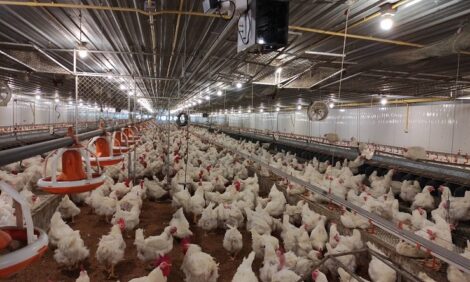



USDA's New Web-Based Awareness Tool Estimates Energy Use for Animal Housing Producers
US - Agriculture Secretary Mike Johanns today unveiled a Web-based energy awareness tool designed to help agricultural producers reduce energy costs related to animal housing.
The "Energy Estimator for Animal Housing" evaluates the energy use and costs associated with heating, lighting and ventilating poultry, swine and dairy housing. This is the fourth energy estimator tool USDA has developed as part of its overall energy strategy to reduce the impacts of high energy costs and to help develop long-term solutions for producers.
"A good analysis of the use and costs for heating, lighting and ventilating animal housing contributes to a comprehensive picture of how energy is used on the farm or ranch," Johanns said. "This tool can result in significant energy and cost savings for producers if they take the appropriate actions."
Producers with animal feeding operations can save up to $250 million annually nationwide by regularly maintaining their ventilation and heating systems and using more energy-efficient fixtures and equipment. An individual producer may realize up to 50 percent savings in energy use by maintaining their ventilation and heating equipment regularly.
The Web-based "Energy Estimator for Animal Housing" has three components-poultry, swine and dairy-that operate independently. The swine component allows the producer to evaluate heating, lighting and ventilation for three production stages-farrowing (birth to about 15 pounds), nursery (weaning) and finishing (growing)-as well as for the overall animal housing. The user can select one or more swine production stages for analysis. For poultry, the producer provides ventilation, lighting and heating information for the entire broiler house. The dairy component also evaluates lighting as well as milk pumping and cooling options.
Once the required information has been entered, the animal housing energy awareness tool provides an analysis of estimated energy use and costs associated with various energy management options. The analysis also identifies potential energy savings that can result from carrying out certain recommendations for swine, poultry and dairy operations.
Producers should use the "Energy Estimator for Animal Housing" for guidance rather than as a sole source for decision-making on energy matters related to animal housing. This tool evaluates alternatives based on producer input, but does not offer site-specific recommendations. It also does not estimate the cost of implementing recommended practices. USDA recommends that producers take their animal housing energy analysis to their local USDA Service Center, Cooperative Extension office, or Rural Electric Cooperative for more field-specific assistance.
The other three estimators address energy costs and usage for tillage, nitrogen fertilizer and irrigation. Producers and NRCS field staff have used the estimators successfully to predict potential energy savings. After using the estimators by themselves or with USDA Service Center staff, some producers have switched to energy-saving equipment and conservation practices such as crop residue management and irrigation water management. For instance, several corn and soybean producers from Nebraska each reported saving up to $4,000 in fuel costs after switching from gravity surface irrigation to center pivot irrigation. An Indiana producer documented an estimated $14,000 in diesel fuel savings last year when he switched to no-till on his entire 1,400-acre corn and soybean operation. His documented savings were very close to the fuel savings predicted by the energy estimator.
National and international visitors, including producers, have been using the tillage, nitrogen fertilizer and irrigation estimators extensively. These awareness tools have received nearly 247,000 page views from U.S. and international visitors through Nov. 11.
Additional information about USDA's "Energy Estimator for Animal Housing" can be found at http://ahat.sc.egov.usda.gov. Information about the energy estimators for tillage, nitrogen fertilizer and irrigation can be found at http://www.usda.gov/energytools.
ThePoultrySite News Desk








